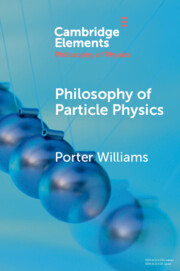Element contents
Philosophy of Particle Physics
Published online by Cambridge University Press: 25 July 2023
Summary
Keywords
- Type
- Element
- Information
- Online ISBN: 9781009205382Publisher: Cambridge University PressPrint publication: 24 August 2023
References
- 5
- Cited by



